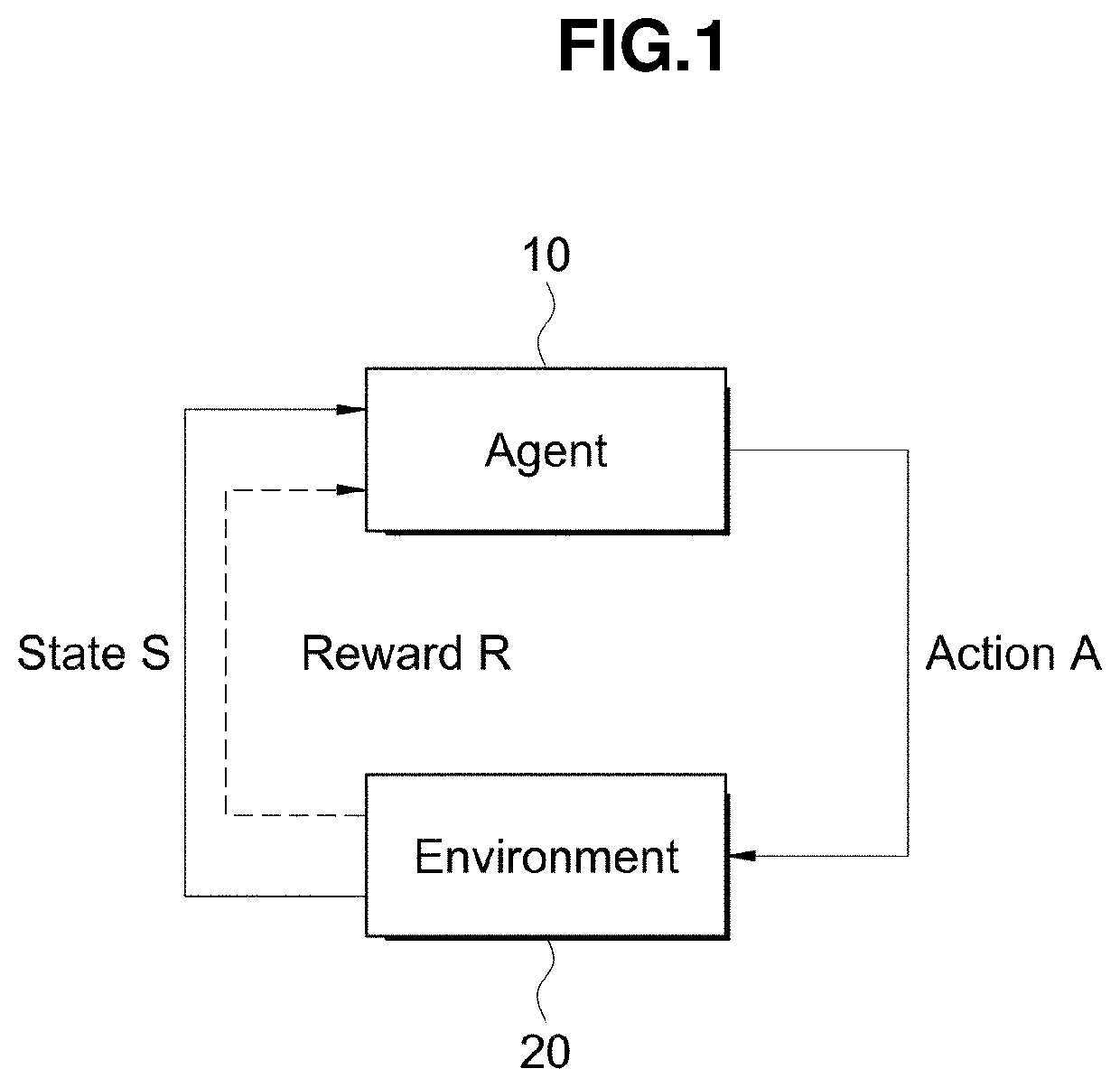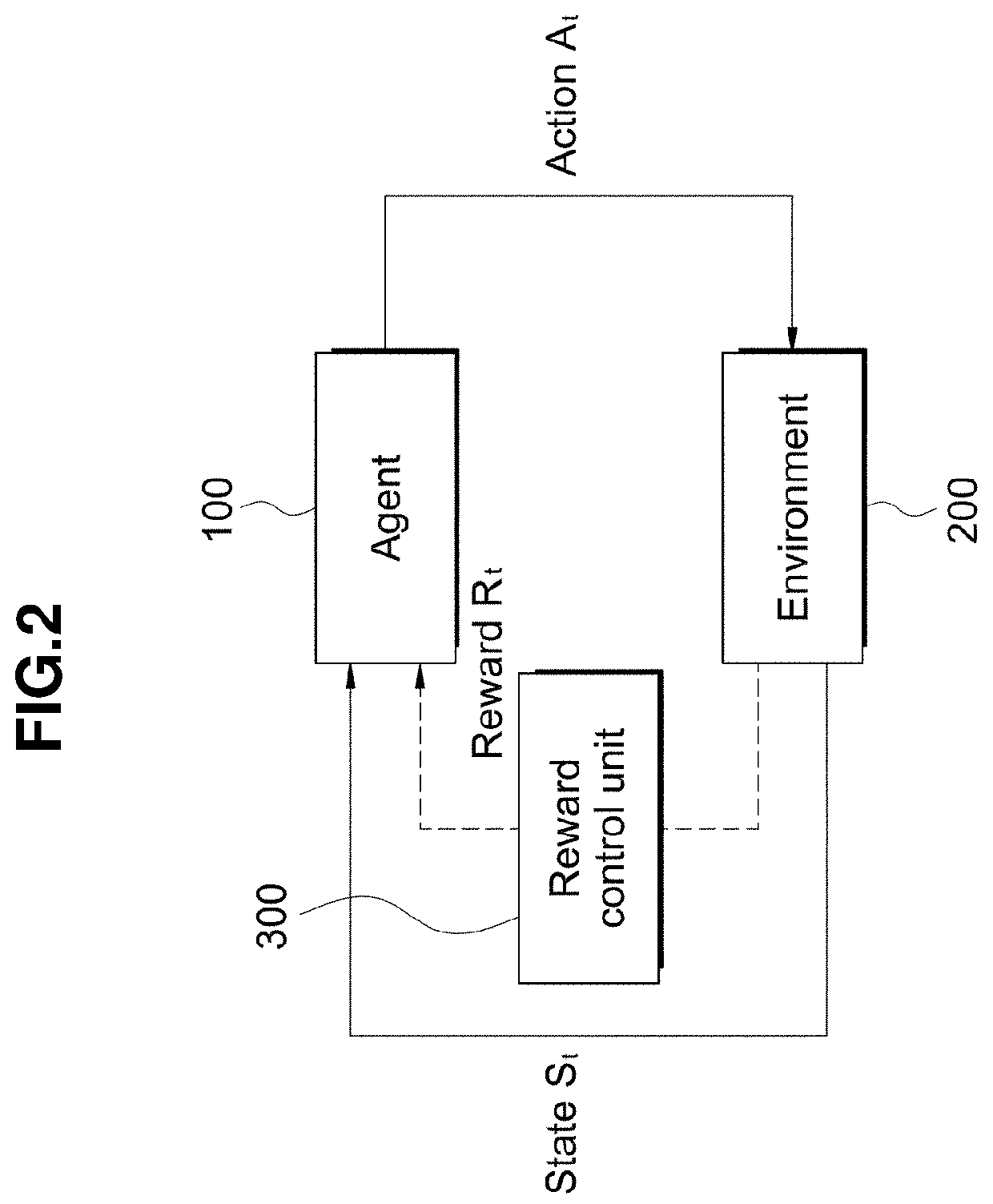Device and method for data-based reinforcement learning
Pending Publication Date: 2022-07-21
AGILESODA INC
View PDF0 Cites 0 Cited by
- Summary
- Abstract
- Description
- Claims
- Application Information
AI Technical Summary
Benefits of technology
The patent text describes a method for reinforcement learning that reduces the difficulty of repeatedly experimenting with different reward configurations to achieve business objectives. It also matches a metric of reinforcement learning with the achievement, reducing the time and computing resources required for model development. Additionally, it reduces the time and resources needed for configuring reward points and trial and error, and enables intuitive understanding of reward points. Furthermore, it enables quantitative comparison and determination of merits before and after reinforcement learning, and connects feedback regarding an action of reinforcement learning with a corresponding reward.
Problems solved by technology
However, the reinforcement learning device according to the prior art has a problem in that, since learning proceeds on the basis of rewards determined unilaterally in connection with metric accomplishment in a given situation, only one action pattern can be taken to accomplish the metric.
In addition, the reinforcement learning device according to the prior art has another problem in that rewards need to be separately configured for reinforcement learning because, in the case of a clear environment (for example, games) which is frequently applied for reinforcement learning, rewards are determined as game scores, but actual business environments are not similar thereto.
In addition, the reinforcement learning device according to the prior art has another problem in that reward points are unilaterally determined and assigned to actions (for example, +1 point if correct, −2 points if wrong), and users are required to designate appropriate reward values while watching learning results, and thus need to repeat and experiment reward configurations conforming to business objectives every time.
In addition, the reinforcement learning device according to the prior art has another problem in that, in order to develop an optimal model, an arbitrary reward point is assigned and is readjusted while watching the learning result through many times of trial and error, and massive time and computing resources are consumed for trial and error in some cases.
Method used
the structure of the environmentally friendly knitted fabric provided by the present invention; figure 2 Flow chart of the yarn wrapping machine for environmentally friendly knitted fabrics and storage devices; image 3 Is the parameter map of the yarn covering machine
View moreImage
Smart Image Click on the blue labels to locate them in the text.
Smart ImageViewing Examples
Examples
Experimental program
Comparison scheme
Effect test
case 1
[0100]400: Case 1
case 2
[0101]400a: Case 2
case 3
[0102]400b: Case 3
[0103]500: Action
[0104]510: Variation rate
the structure of the environmentally friendly knitted fabric provided by the present invention; figure 2 Flow chart of the yarn wrapping machine for environmentally friendly knitted fabrics and storage devices; image 3 Is the parameter map of the yarn covering machine
Login to View More PUM
 Login to View More
Login to View More Abstract
Disclosed is a device for data-based reinforcement learning. The disclosure allows an agent to learn a reinforcement learning model so as to maximize a reward for an action selectable according to a current state in a random environment, wherein a difference between a total variation rate and an individual variation rate for each action is provided as a reward for the agent.
Description
TECHNICAL FIELD[0001]The disclosure relates to a device and a method for data-based reinforcement learning and, more specifically, to a device and a method for data-based reinforcement learning, wherein a difference in overall variation is defined as a reward and provided according to variations caused by actions in individual cases, based on data in actual businesses, in connection with data reflected during model learning.BACKGROUND ART[0002]Reinforcement learning refers to a learning method for handling an agent who accomplishes a metric while interacting with the environment, and is widely used in fields related to robots or artificial intelligence.[0003]The purpose of such reinforcement learning is to find out what action is to be performed by a reinforcement learning agent, who is the subject of learning actions, in order to receive more rewards.[0004]That is, it is learned what should be done to maximize rewards even in the absence of a fixed answer, and processes of maximizi...
Claims
the structure of the environmentally friendly knitted fabric provided by the present invention; figure 2 Flow chart of the yarn wrapping machine for environmentally friendly knitted fabrics and storage devices; image 3 Is the parameter map of the yarn covering machine
Login to View More Application Information
Patent Timeline
 Login to View More
Login to View More IPC IPC(8): G06N20/00
CPCG06N20/00G06N3/006G06N7/01
Inventor CHA, YONGRHO, CHEOL-KYUNLEE, KWON-YEOL
Owner AGILESODA INC
Features
- R&D
- Intellectual Property
- Life Sciences
- Materials
- Tech Scout
Why Patsnap Eureka
- Unparalleled Data Quality
- Higher Quality Content
- 60% Fewer Hallucinations
Social media
Patsnap Eureka Blog
Learn More Browse by: Latest US Patents, China's latest patents, Technical Efficacy Thesaurus, Application Domain, Technology Topic, Popular Technical Reports.
© 2025 PatSnap. All rights reserved.Legal|Privacy policy|Modern Slavery Act Transparency Statement|Sitemap|About US| Contact US: help@patsnap.com



